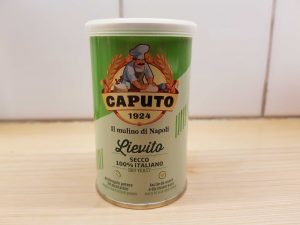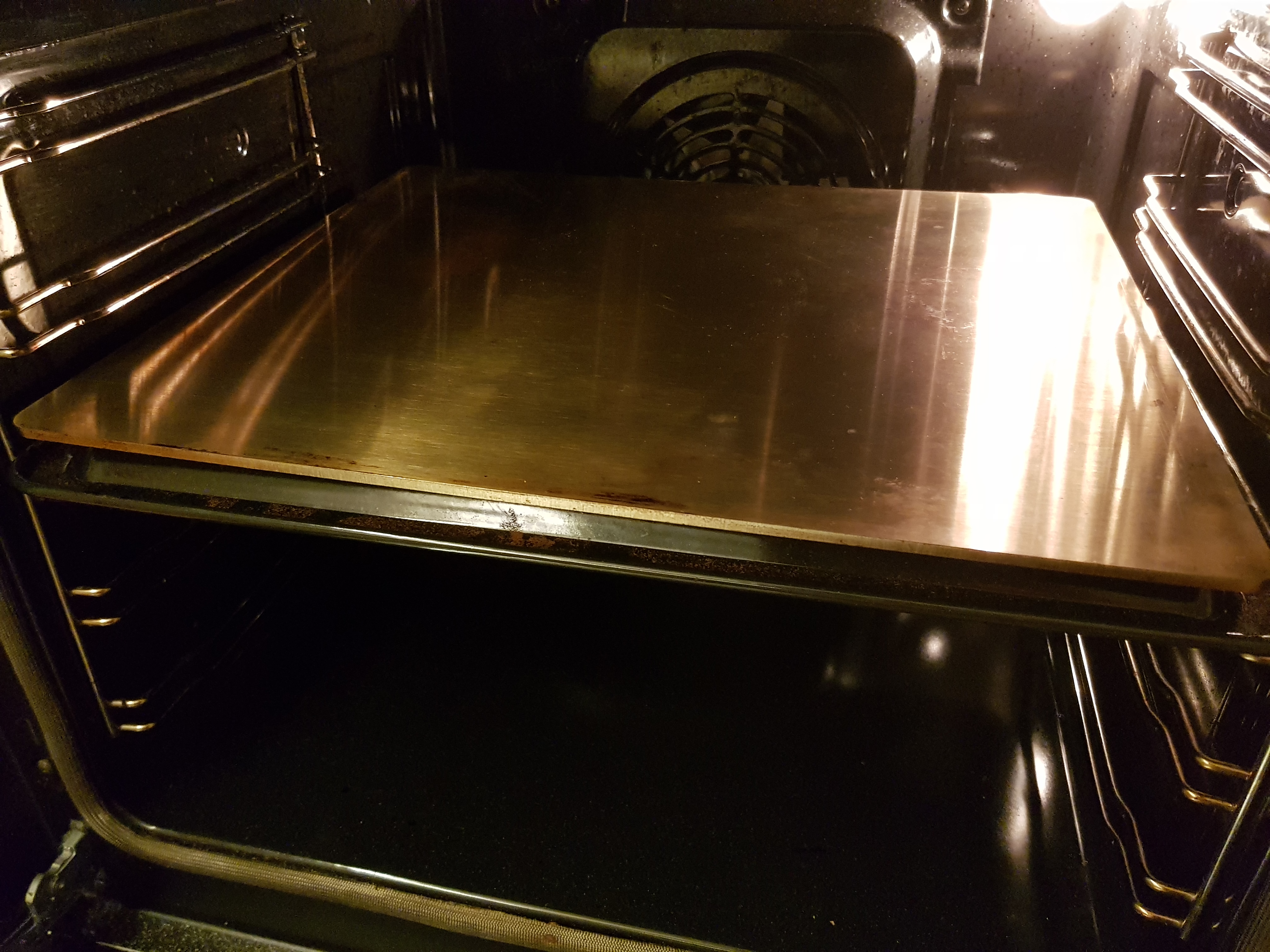The secret to flavorful pizza is in the dough. The crust of the pizza is the most important part of pizza. As a famous Michelin inspector once said; the crust is 80% of the pizza. And I couldn’t agree more. So how do you improve the flavor of your pizza dough and make delicious pizza?
How to flavor pizza dough
The three easiest ways to improve the flavor of your pizza dough are:
- Add enough salt: 1.5 – 3%
- Let the dough rise slowly: at least 4 hours
- Use pre-ferments
What determins flavor of pizza dough?
The two most important components in flavor development are salt and yeast. There is also flavor in the flour and the salt and yeast bring these out flavors. Salt is a natural pizza dough flavor enhancer, while yeast adds flavor through the fermentation process in addition to breaking down and releasing flavors from the flour.
Salt – a pizza dough flavor enhancer
If you’ve ever forgotten to add salt to your bread or pizza dough, you probably understand why you need it. The same goes for steak. Almost anything tastes better with salt. That’s because salt is a flavor booster that brings out the flavors and aroma of food. At low concentrations, salt also increases the sweetness of the bread. Salt is therefore an important ingredient in pizza dough.
Salt also plays a huge role in tightening the gluten and controlling the speed of fermentation, in addition to boosting flavor.
Yeast
Baking is in many ways like chemistry. A lot of the more interesting flavors of the pizza dough are a result of the fermentation process – when yeast eats sugars from the flour, and turn them into alcohol and CO2.
When your dough has proper gluten development, the gluten creates a network of small pockets. These small pockets trap the CO2 gas produced by the yeast. So when during fermentation, the yeast will slowly fill the dough with more and more COO2, inflating it like a balloon. This is what makes the dough increase in volume during fermentation. And what makes a light and open crumb during baking. The CO2 does however not contribute much to the flavor, mainly the consistency and structure of the final product.
Alcohol is what adds flavor to the dough. The flavor depends on several different factors, such as how fast the dough ferments, the total duration of fermentation, and the temperature at which the dough is fermented. And generally speaking, a long, slow, and steady fermentation will create the best flavor.
It’s hard to explain exactly what the crust taste like and how the flavor change from the fermentation process. But it’s often described as stronger and more complex.
Quick rise vs long Rise pizza dough
Pizza dough is like a good wine – it gets better with time. The flavor of the crust will get stronger and better with time. Therefore a long, slow fermentation time will give you a better result.
The most common mistake people make when baking pizza is to rush the fermentation. You simply can’t make great, flavorful pizza in 1 hour. You should let your pizza dough rise for a minimum of 4 hours. But longer is better.
There are also other reasons to let the dough rest longer. It will help proper hydration of the flour, gluten development, and relax the dough to make it easier to stretch and shape.
The 3 main ways of slowing down the rise are:
Reduce the amount of yeast
It will take longer for the dough to ferment if it contains less yeast.
Reduce the fermentation temperature
By reducing the temperature, the yeast will be less active and it will take longer to ferment the dough.
Add more salt
Salt slows down the yeast by making it less active. The more salt, the slower the yeast will work, and the longer the fermentation time will be. A too high concentration of salt can even kill the yeast.
Salt is mainly something you should use to slow down fermentation if you currently use too little salt. And you should not go above 2.5 – 3% salt in baker’s percentages.
You can read more about salt in pizza dough here.
Long rise pizza dough – slow down fermetnation
Even though many people look at pizza as fast food, it’s actually quite the contrary. Pizza is a type of food that takes time. The key to tasty pizza dough is to let the pizza get enough time to develop flavor.
A good example of flavorful pizza crust is Neapolitan pizza. If you’ve tried to bake pizza at home, and wondered why the crust doesn’t really have much flavor compared to a traditional pizza in a Neapolitan pizzeria, the time is the difference. Neapolitan pizza is left to rise for 8-24 or even more.
Long rise pizza dough at room temperature
Rising pizza dough at room temperature for an extended period of time is not a new idea. This is a method that dates back hundreds of years to the beginning of pizza in Naples, Italy.
To give the dough more time to rise, you need to slow down the fermentation. This can be done by reducing the amount of yeast. Less yeast means the process will slow down.
Cold rise pizza dough to improve flavor
Another way to slow down the fermentation process is to lower the temperature. This will make the yeast less active, and make the fermentation take days instead of hours. The easiest method way to lower the temperature is to rise your pizza dough in the fridge.
The reason cold fermentation adds flavor to the dough is that even though the east is nearly inactive in the low temperature of your fridge, the fermentation process doesn’t stop. So flavor will develop over time even though the dough doesn’t rise.
To really let the flavor develop, you should leave the dough in the fridge for at least 48-72 hours. But you can even longer. If you use a strong flour, that can withstand a long rise, you can leave the dough in the fridge for up to a week. You can read more about flour and flour strength here.
Cold fermentation is actually really easy, you can just make your regular pizza dough, and throw the dough in the fridge for a few days. It requires some planning, but I find it super convenient to just have the dough ready in the fridge so I can concentrate on the sauce, toppings, and preparation of the dough on pizza night.
If you want to read more about cold fermented pizza dough, check out my full recipe here.
Improve flavor of pizza using sourdough
Another method to improve the flavor of your pizza crust is to use a sourdough starter. Instead of using commercial yeast, sourdough uses natural wild yeas and lactobacilli found in flour. And sourdough is an old method of bread baking that has been used for thousands of years.
To make sourdough pizza, you first need a sourdough starter. This can be made by combining flour and water, then feeding the dough more flour and water. When you keep doing this, the natural yeast in the flour will start to grow and ferment the dough.
When you want to make pizza dough, you combine the sourdough starter with flour, water salt to make the dough. So instead of adding yeast, you use the natural yeast found in the flour that has developed in the sourdough starter.
Improve flavor using poolish and pre-feremtnation
Poolish is a method that’s sort of a combination of the above methods. And it’s a great way to improve the flavor of pizza crust.
Poolish is a pre-ferment that you add to the dough to get a more flavorful dough without the use of sourdough or a very long fermentation time. Poolish has dough hydration of 100%, which means equal parts flour and water, in addition to a small amount of yeast. When you combine the ingredients, the poolish is left to ferment for 8-24 hours to develop the more complex flavor of fermented pizza dough.
When you’re ready to make the actual pizza dough, you just add additional flour, salt, and other ingredients to the poolish, and let the dough rise as usual. A huge benefit of this method is that the final dough needs less time to rise because much of the flavor comes from the poolish.
Conclusion
The key to more flavorful pizza dough is the combination of high-quality ingredients, salt to enhance the flavor a long, slow fermentation. There are many ways you can ferment the dough, but the most important factor for all is time. To create flavorful pizza you need to give the dough the time it needs to develop those flavors.
Related
- Is Your Pizza Dough Too Dry? Here is How to fix it! - June 10, 2024
- The Ultimate Guide to the Pizza Dough Windowpane Test - June 8, 2024
- The Ultimate Guide to Autolyse Pizza Dough - June 7, 2024





Thank you for your post on pizza crust! I have a question… Can you do the 24 hour poolish and then add the dough, salt and oil… then rest 15 min on counter, then knead for 10 minutes, then put back into the fridge for several days? What percent of poolish to the added flour do you need? I would assume that the yeast gets used up in the poolish? There’s a lot of inexact recipes out there that confuse me on ratios and methods.
Hi, yes, you can absolutely do that!
At some point, yes, the yeast will run out of food and slow down and eventually stop, but if you cold ferment your dough, it will slow down the fermentation process.
I haven’t personally experimented with combining poolish and cold fermetnation because I don’t think you will get a lot of additional flavors or a significant change in texture from using poolish if you cold ferment your dough for several days. But give it a try, I’d love to hear how it turns out!
Andreas